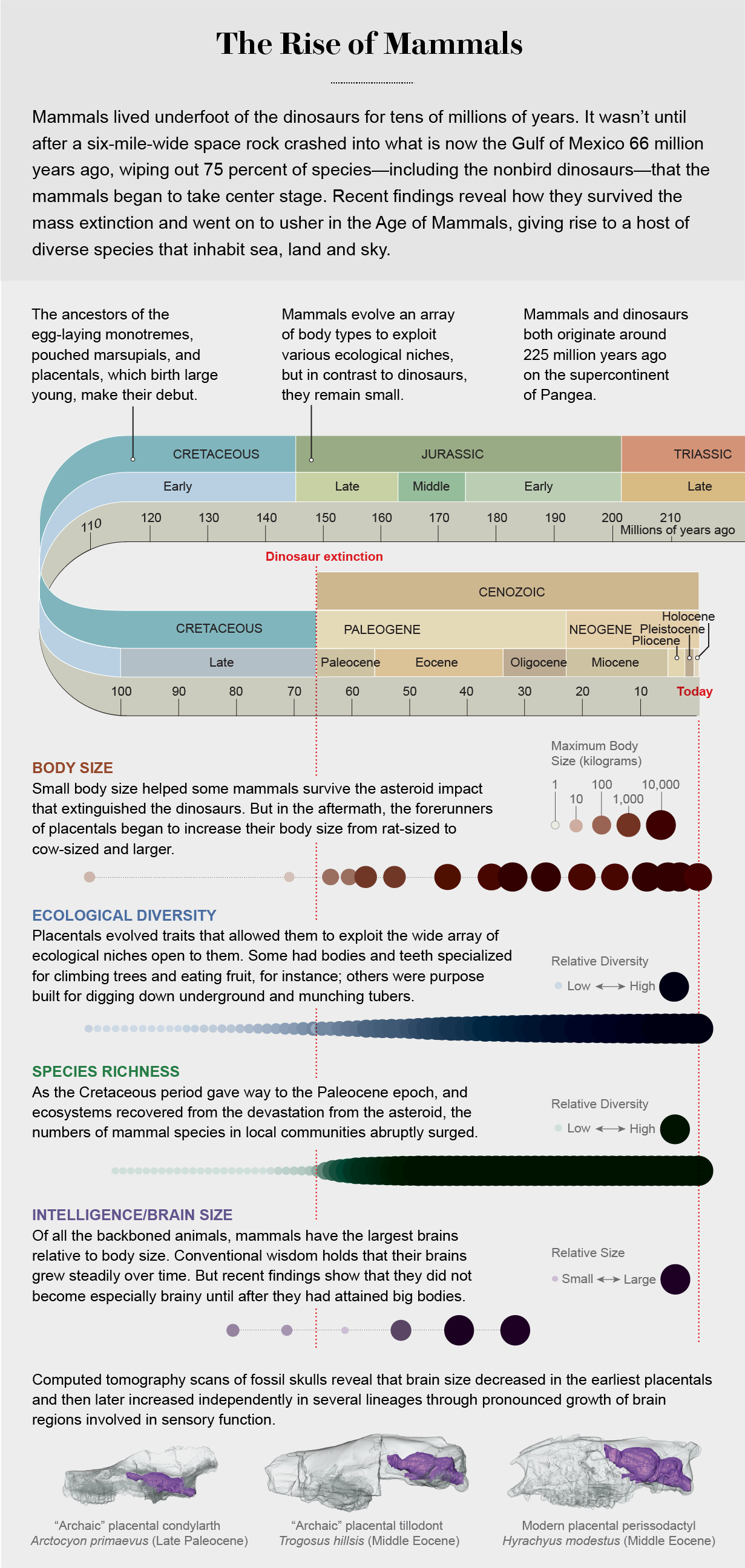Dinosaurs Lost, Mammals Won - How?
We all know that at the end of the Cretaceous dinosaurs became extinct and that mammals inherited the Earth. We know much about the extinction, less about the success of the mammals.
A correspondent has sent me THIS LINK which tries to answer this question.
Mammals had been around for as long as the dinosaurs but they led very inconspicuous lives and this may have saved them from catastrophe.
Many mammalian species became extinct; the ones that survived were small and omnivorous - the generalists.
100,000 years after the asteroid impact the first primate appeared, the interestingly named Purgatorious. From this beastie, or something like it, we are descended.
The mammals which survived the impact were small. But they did not stay small for long. They increased in size, from rat-size to cow-size, but their brains did not keep pace. They did not live by their wits. It was only later that brains started to expand.
The following diagram contains a great deal of information and does it rather elegantly. You can download a full size version HERE
Graphic by Jen Christiansen and Ornella Bertrand (brains); Sources: “The Evolution of Maximum Body Size of Terrestrial Mammals,” by Felisa A. Smith et al., in Science, Vol. 330; November 26, 2010 (body size data); “Untangling the Multiple Ecological Radiations of Early Mammals,” by David M. Grossnickle et al., in Trends in Ecology and Evolution, Vol. 34; October 2019 (ecological diversity data); “Diversity Dynamics of Phanerozoic Terrestrial Tetrapods at the Local-Community Scale,” by Roger A. Close et al., in Nature Ecology and Evolution, Vol. 3; February 2019 (species diversity data); “Brawn before Brains in Placental Mammals after the End-Cretaceous Extinction,” by Ornella C. Bertrand et al., in Science, Vol. 376; March 31, 2022 (brain size data)

No comments:
Post a Comment